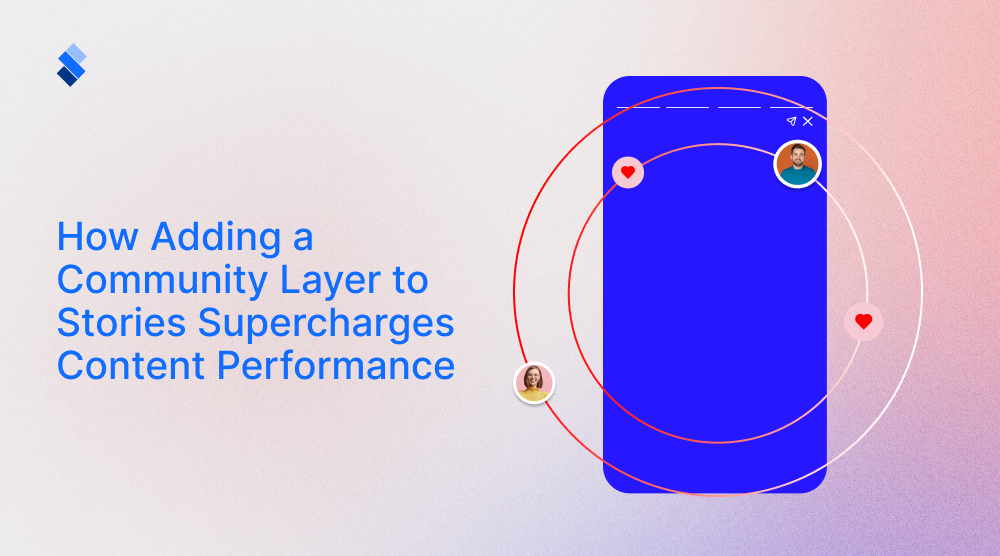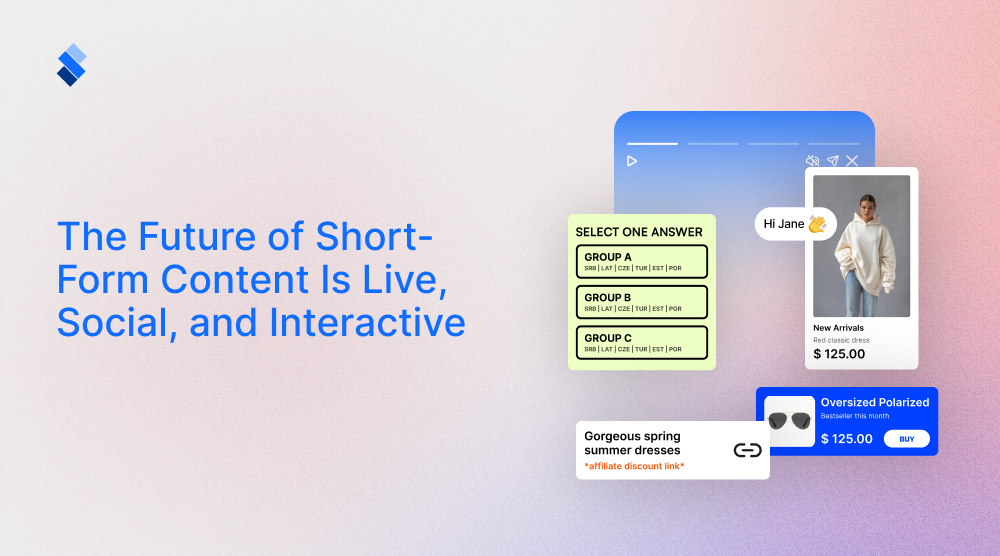Customer engagement trends for 2022
To establish a long-term connection with your users, you need to be aware of the customer engagement trends for 2022.

Customer engagement, as with many aspects of digital marketing, is something that you need to closely follow. It is connected to modern technologies and marketing trends, which makes it quite susceptible to changes. Therefore, in order to have success in engaging your customers, you need to keep track of the ongoing trends and incorporate them into your overall online presence. In this article, we will examine key customer engagement trends for 2022 and give you a couple of ideas on how to make full use of them.
Key customer engagement trends for 2022
To fully appreciate the ongoing development of customer engagement, there are a couple of aspects that you need to keep in mind. Firstly, the increased use of mobile devices has made mobile-friendly customer engagement and marketing all but necessary. Secondly, personalization has effectively become the norm in modern marketing. Thirdly, AI advancements have made customer engagement, and the data that goes into it, far more complex. And finally, all these advances have made data security an important issue for companies. If you understand these four, you will have a good idea of what customer engagement is all about in 2022.
Hyper-personalization
Personalization has been a cornerstone of digital marketing for a few years now. We've already covered it in a previous article, so we won't go into much depth here. Simply put, when it comes to customer engagement, personalization means catering the customer experience to the customer, as an individual. Before, companies tried to imagine the "average customer" and then optimize their content for them. In 2022, this is simply not effective.

To gain any traction with a modern audience, you need to have highly personalized content to put out. You need to gather data about:
- Customer behaviour patterns
- Search results
- Purchase history
- Usual active times
- Prior interactions with companies
All these are useful info for figuring out how to cater your online presence to your customer. Optimizing user experience can range from setting up apps to offering discounts to specific users to optimizing your website to push personalized content to previous customers. This, as you can imagine, can be a considerable investment as you need to collect a decent amount of data. But it is something that you need to do if you wish to keep up with modern marketing. Among the customer engagement trends for 2022, this is one of the more prevalent ones.
Data security
Modern customer engagement is based on getting as much data from customers as possible. And seeing that most of that data comes from customers willingly providing you with info (declared data) it only makes sense that it needs to be secured. We even have new legislations that outline the importance of data security, and how costly it can be for customers if they don't tackle it with due care. But, to provide security for this increased influx of data, you will need to mobilize more resources and clearly outline how you plan to manage the gathered data. Some of the recommended practices include:
- Outlining your planned data management in an upfront policy. You need to mention how and why you are going to collect user data.
- Get consent from users before you start pushing content on them.
- Being judicious with data use.
- Only use tools that adhere to industry-accepted standards.
- If there is an issue with data security, don't try to sweep it under the rug. Inform your customers as transparently as you can, and outline what your plan is. A data breach can hurt your brand. But lying to your customers will effectively destroy it.
Building an omnichannel experience
Believing that modern users only remain on a single channel while using their devices shows a clear lack of understanding. Modern customers seamlessly go from an app to an online browser to email. Especially if they are on their phone. And if your brand doesn't seamlessly transition from one channel to another, you aren't doing something right.

To engage modern customers you need to provide an experience that makes full use of their devices, and their online habits. As such, omnichannel experience is something you should seriously consider when designing your brand, and your content. Web stories are a great example of omnichannel content. From improving in-app engagement to guiding people to your website placement. They can serve as an easy way to segway your user from one channel to another.
Unification of customer-facing functions
By now it should be obvious that user engagement is not something a single team can successfully tackle. For you to tailor a suitable customer experience you need to have your entire company work as one. Marketing, sales, customer service and product. All these teams need to work together in order to create a decent customer experience.
This is also reflected in how you organize and manage your customer data. While before each team had their own database to work with, modern trends necessitate a unified database for the entire company. Your marketing teams need to have access to both sales data, and customer info. Just like your sales team needs to know the ongoing marketing data in order to integrate it with customer information. We can list further examples, but you get the idea of what modern companies do to ensure that the customer experience is as smooth and informed as possible. Such access to data, and overall unification of functions, makes handling customers easy, and establishing CX strategies far more straightforward.
Increased use of AI
Customer experience is made much easier by the clever use of AI. Chatbots are an easy solution for redundant customer questions and fairly simple problems that customers encounter. By using a chatbot instead of a FAQ page, companies help their customer management teams by freeing up their time for more complex tasks. As time goes by, we believe that we will only see more and more use of AI in customer management.

Furthermore, when it comes to gathering, filtering and sorting customer data, AI is pretty much invaluable. Without it, you could hardly hope to gather all the user data needed to tackle user experience with due care. AI is also a valuable tool in recognizing which content to recommend to customers (especially in online stores), and how to keep their interest for long periods of time.
But, while all these AI benefits are apparent, there is one downside to keep in mind. Namely, while AI brings benefits to the customer experience, the customers have pretty much grown to expect them. In 2022 it is not a matter of choice whether you will gather sizable customer data, or have a chatbot helping the user. The customer expects tailor-made content, as well as a near-instant reply from the customer service. As such, it is growing more and more important to incorporate AI in your digital presence.
AR and VR
It is worth noting that mobile devices aren't the only technology you need to adapt your CX too. Namely, new advancements in AR (Augmented reality) and VR (Virtual reality) industry open up new markets, and therefore new ways to tailor the customer experience. Some industries like real estate and interior decoration have fully accepted AR and VR as viable marketing platforms. They use AR and VR to either showcase pieces of decoration or entire rooms. As you can imagine, for a customer to see a room through a VR set, or see a new piece of furniture in your room with AR greatly boosts their experience.

Real estate use is just one example of what we expect will be a growing trend throughout 2022. Now, of course, not all industries can make use of AR or VR. But, you'd be surprised at the untapped potential there is with these emerging technologies.
Final takeaways
What's important to understand about customer engagement trends for 2022 is that you don't have to make use of all of them. After all, trying to incorporate both AI software, and personalization at the same time will only leave you confused and tired. Instead, try to explore a single trend and then see how you can incorporate it with your brand. While exploring it, you will likely run into all the others that we've mentioned. So, you won't lose anything by focusing on a single trend that seems easiest, or most beneficial, to apply.







